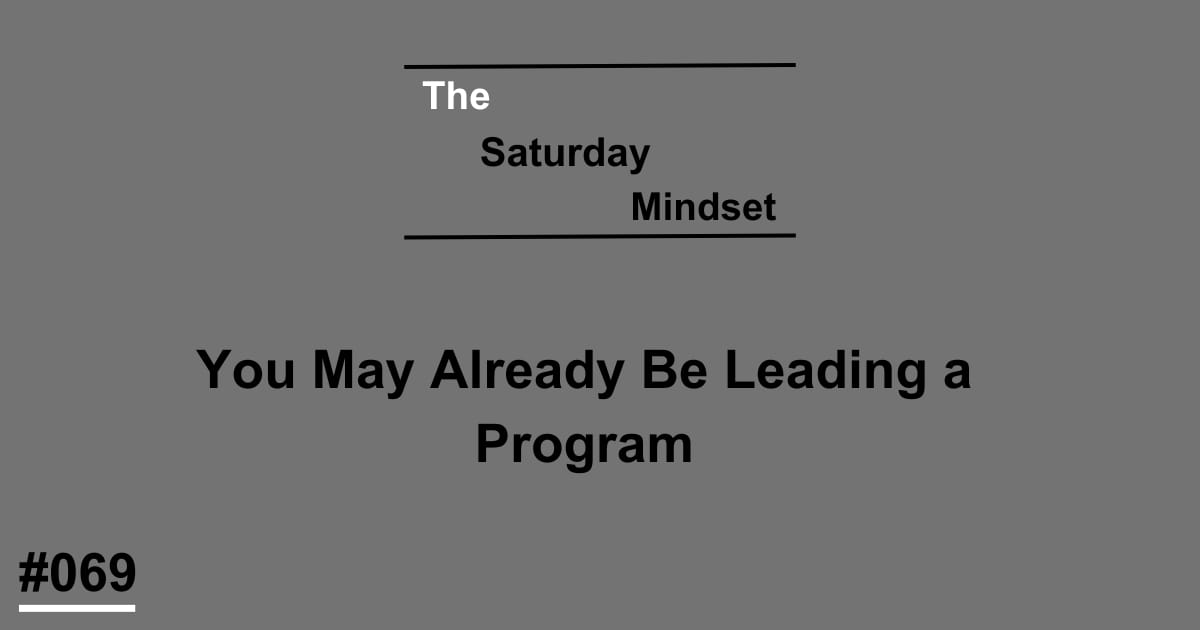- The Saturday Mindset
- Posts
- You May Already Be Leading a Program
You May Already Be Leading a Program
Read time - 3 minutes

Most of us start project leadership with a single objective, a clear team, and a defined timeline.
But over time, the scope shifts.
Soon, you're coordinating more than just one delivery. You’re supporting multiple efforts — balancing timelines, resolving risks that span across scopes, guiding teams, and keeping business goals front and center.
That’s when you’re no longer just managing a project.
You’re leading a program — even if no one’s updated your title.
Table of Contents
What I’ve Been Doing
For quite some time now, my focus has stretched far beyond project boundaries. I’ve been responsible for coordinating work across multiple initiatives — some are structured projects, others are supporting activities, and a few don’t look directly related at first glance, but they all contribute to a shared strategic objective.
Instead of tracking isolated milestones, I’ve been:
Aligning delivery across scopes and departments
Managing risks that span multiple efforts
Supporting other project managers
Ensuring all work stays tied to business value
No formal title change. Just consistent responsibility and strategic coordination.
This is what program leadership looks like in practice.
PMBOK® 7 Defines It Clearly
The PMBOK® Guide – Seventh Edition defines a program as:
“Related projects, subsidiary programs, and program activities that are managed in a coordinated manner to obtain benefits not available from managing them individually.”
(PMBOK® Guide, 7th Edition, Glossary, Page 245)
This definition highlights something important:
Programs aren’t limited to interrelated projects — they also include broader activities and management efforts that together deliver greater value.
And that’s exactly where PMBOK® 7 places its emphasis. One of its core principles is:
“Focus on Value.”
Your job isn’t just to deliver scope — it’s to make sure all the moving parts contribute to outcomes that matter.
3 Signs You’re Already Acting as a Program Leader
You manage more than just projects.
You oversee efforts that extend beyond project charters — activities, resources, and dependencies that don’t always fall under a single plan.You align everything to business outcomes.
Your role isn’t just about getting things done. It’s about making sure the right things come together to deliver strategic value.You coordinate across scopes and roles.
You’re not just executing — you’re enabling others to deliver, resolving conflicts, and keeping the full picture in sync.
A Lesson From This Week
This week, I worked across several workstreams that, on paper, had nothing to do with one another. But in practice, they shared timelines, resources, and dependencies — and they all aimed to improve a key area of our operations.
What made the difference?
Zooming out, realigning the moving parts, and clarifying what we’re truly trying to achieve.
That’s not project management. That’s program leadership in action.
One Thought for You
If you’re coordinating multiple efforts — structured or not — and your goal is to align them for greater benefit...
You’re already leading a program.
The formal title may come later. But the impact is already happening now.
P.S. Let’s connect on LinkedIn if we haven’t already — I’d love to hear what you’re working on.
Looking forward to catching up again next Saturday.